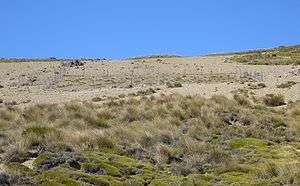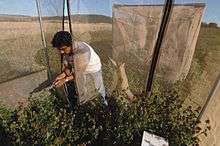Exclosure


An exclosure, in an area being used extensively for grazing, is a limited area from which unwanted animals, for example browsing animals, such as domestic cattle or wildlife, such as deer, are excluded by fencing or other means. Exclosures are sometimes constructed by government agencies that manage livestock use on public lands—a practice in which private owners of cattle pay, though often only a nominal sum, for the right to graze their livestock on the public lands.
One purpose of the exclosure is to determine how the area would develop (in biodiversity, vegetation height, ecological characteristics, etc.) if grazing were not conducted.
Another purpose is to demarcate an area safe for humans by excluding potentially deadly animals. For example, a beach may have a shark net around it to prevent sharks from attacking human swimmers. Another example is at wild animal preserves which provide fenced in areas for humans to safely watch lions, tigers, or other large predators.
See also
External links
- The Kenya Long-term Exclosure Experiment - An exclosure experiment in Africa with both livestock and wildlife.
- Burnt Creek Exclosure - photos of a Bureau of Land Management exclosure in the Pahsimeroi River Valley of Idaho